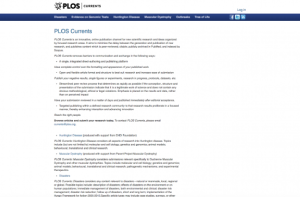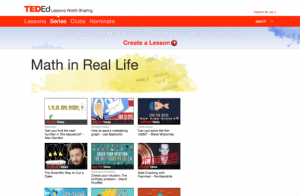Research and Education
Back to Top
|
 |
|
The Open Anthology of Literature in English
|
Language Arts |
|
The Open Anthology of Literature in English is a project headed by John O'Brien of the University of Virginia. This "anthology in progress" was created to help students explore texts authored in English between 1650 and 1800. The texts in this collection are organized into six categories: Fiction, Essays, Poetry, Life Writing, Drama, and Authors. Each text is annotated to help contemporary readers read and analyze these works. In addition, readers may add their own annotations via the hypoths.is plug in. This extensive collections, which includes dozens of famous works authored on both sides of the Atlantic, is designed for literature students and instructors as well as members of the general public. The Anthology includes works by Daniel DeFoe, Samuel Pepys, Benjamin Franklin, Phyllis Wheatley, Anne Bradstreet, and much more. O'Brien and his team plan to additional works, so stay tuned. [MMB] |
|





|
|
 |
|
Classroom Law Project: Resources
|
Social studies |
|
Oregon's Classroom Law Project (CLP) is a non-profit organization dedicated to helping youth "become active, engaged, and informed participants in democratic society." On its resources page, K-12 social studies teachers will find a range of materials for teaching civics and law, including a number of lesson plans that engage young citizens with contemporary legal issues and debates. Educators can best browse these lessons via the Teaching Materials link, where lesson plans, readings, mock trials, role play activities, handouts, and more are organized by topics such as First Amendment, Fourth Amendment, Congress and Lawmaking, Criminal Law, and more. The CLP also allows instructors to explore this wealth of material with a bit more ease via an Online Library, where users may conduct a keyword search or filter material by grade level, topic, or type of research. [MMB] |
|





|
|
 |
|
 |
|
Picturing America
|
Arts |
|
The National Endowment for the Humanities (NEH) and the American Library Association (ALA) teamed up to create this impressive collection of lesson plans and other classroom resources related to famous American art works. These resources, which center on forty different works created between 1100 and 1996, were developed as part of a national initiative that ended in 2009. While no longer active, these materials are still available on this website. Educational materials include Resource Books, Lesson Plans, and Special Features. Resource Books are available in English, Arabic, Spanish, and Portuguese, and provide an image of each selected artwork accompanied by a short essay and suggested classroom activities and discussion questions (labeled by grade level). Lesson Plans facilitate student exploration of Jacob Lawrence's migration series, Grant Wood's Paul Revere and His Midnight Ride, and the Mission Nuestra Senora de la Concepcion. Finally, readers will find multimedia, interdisciplinary resources related to particular topics or artists in Special Features. [MMB] |
|





|
|
 |
|
TryComputing.org
|
Science |
|
From the Institute of Electrical and Electronics Engineers (IEEE) comes TryComputing.org, a collection of resources designed to engage youth in computer science. K-12 instructors may want to start by checking out the Lesson Plan section, which features 28 lesson plans as of this write up. In Choose Your Best Way, middle school and high school students build their own mathematical model to help them solve problems, and, in the process, learn about computer algorithm. Another lesson, Networks, engages middle school learners with the concepts behind graph theory via a number of interactive, kinesthetic activities. Meanwhile, in the Career Profiles section, visitors can read a collection of short interviews with individuals who work in different careers related to computer science, from academia to game development to engineering, and more. [MMB] |
|





|
|
 |
|
The Yellow Nineties Online
|
Language Arts |
|
The Yellow Nineties Online is an open-access digital archive dedicated to Great Britain's avante-garde periodicals and influential movers and shakers of the 1890s. Edited by Ryerson University scholars Dennis Denisoff and Lorraine Janzen Kooistra, The Yellow Nineties contains complete editions of The Yellow Book, dated from April 1894 through April 1897 (FlipBook, HTML, XML, PDF). It also houses a lengthy catalog of biographies for eminent figures in this bold and industrious time period of Great Britain. Other The Yellow Nineties texts include The Pageant, The Pagan Review, The Life of Sir Thomas Bodley, and The Evergreen: The Northern Seasonal. For enthusiasts of the late nineteenth Century, The Yellow Nineties Online offers a glimpse into the art, lives, and interests of the people of that era. [MMB] |
|





|
|
 |
|
PLOS Currents
|
Science |
|
For almost two decades, the Public Library of Sciences (PLOS) has offered open-access, peer-reviewed scholarship from all areas of science. For science scholars, instructors, and students who want to stay abreast of developments in a particular research topic, PLOS offers PLOS Currents, "an innovative, online publication channel for new scientific research and ideas organized by focused research areas." As with other PLOS publications, PLOS Currents facilitate open communication among researchers by publishing completed and in progress research. There are currently six PLOS Currents listed on this page, which readers may browse and explore at their leisure. Topics include Huntington Disease, Muscular Dystrophy, Disasters, Outbreaks, Tree of Life, and Evidence on Genomic Tests. [MMB] |
|





|
|
 |
|























